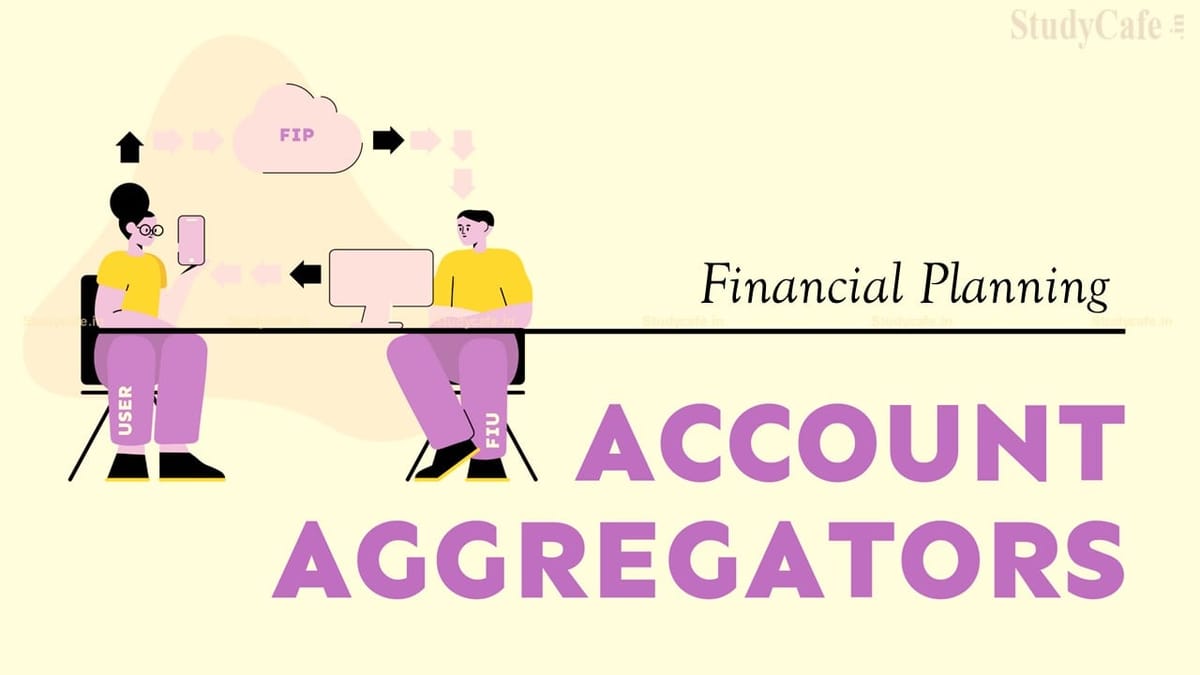Deepshikha | May 23, 2022 |

Account Aggregators and Financial Planning
Massive digital disruption is transforming the way we work and do business in every field. Companies who are well-positioned to take advantage of the change to remote working, digital payments, and online purchasing are seeing significant revenue growth, often at the expense of slower, less-agile competitors. The widespread use of digital payments, thanks to reforms like UPI, demonstrates how far the financial ecosystem has progressed; it’s no wonder, then, that by 2025, 71% of all payment transactions in India would be digital.
While the financial services sector has experienced the most upheavals, the Account Aggregator (AA) ecosystem is expected to experience even more. AA is an RBI programme that aims to give consumers the ability to use their financial data for their profit with a single click of a button. All parts of a user’s financial data, investments, insurance policies, loans, bank details, and so on would be accessible once fully functional.
While lending fintechs have been quick to implement AA to better serve their users with speedier and more lucrative loan products, its adoption in the personal finance and investing area will grow over time. AA has numerous applications in personal finance and investment planning.
With time more use cases will emerge but for now, let’s look at some of the major ones.
Most individual investors’ investments are dispersed over multiple MFDs, banks, brokers, and insurance firms. Most investors struggle to consolidate all of their investments into a single platform. Unfortunately, incumbent platforms that do support this have little alternative but to require customers to manually put in their data, which is a time-consuming procedure, or scrape mutual fund / NSDL statements, which are neither exhaustive nor completely correct.
All of these worries are alleviated by the AA ecosystem, which allows traditional and online advisers to provide their clients with access to all investments through a single platform. With the investors’ explicit approval, advisors can also evaluate the data and generate actionable insights from their portfolios.
This would allow investors to not only monitor their assets in real-time but also to take faster and more informed decisions about their investments, perhaps resulting in higher returns and avoiding costly mistakes.
Tracking investments with a unique identifier (such as a mobile number) will ensure that investors do not overlook or forget about previous investments. According to ET Wealth, unclaimed investments in mutual funds, equities, insurance companies, and other assets are at record highs (> 82,000 crores), and it would be a shame to see investors lose or forget their little pots of gold that have been accumulated over many years, especially during times when the user is not present.
A large part of the unclaimed investments is attributable to either:
The AA ecosystem is a great place to start when it comes to implementing the Unified Nominations Register (UNR). A UNR is a centralised record of an investor’s nomination details (nominees) for all of his or her assets in various asset classes.
Personal finance and wealth management platforms can join this ecosystem to help ensure that their users’ nominations are in place and to alert/attend to investments that aren’t nominated, all from one place. This will help the whole investor ecosystem, as families will no longer have to rush from pillar to post to claim their rightful money during times of need and bereavement.
Banks earn thousands of crores of rupees every year on money held in low-yielding current and savings accounts. A large portion of these deposits is simply sitting there due to a lack of knowledge or proper financial planning.
Account Aggregator standards will enable fintech companies in the personal finance area to more effectively plan and guide depositors, ensuring that any funds not required to be parked in such accounts can be invested for higher returns. Needless to say, this is a two-edged sword that can lead to asset erosion if investors take disproportionate risks to earn better returns, so choosing the correct advisor is critical.
Providing all financial transactions and statements from all accounts to one’s CPA is an annual ritual as tax filing deadlines approach. Instead, fintech players such as investment advisors can simply use the AA ecosystem to prepare and show all relevant details for filing taxes, such as capital gains, income, and so on. All calculations and return preparation can be done in the background with a few mouse clicks.
These are just a few examples of how the Account Aggregator regulations can be used, and they may only be the tip of the iceberg. As the ecosystem matures over the next few years, we should see a slew of new ideas that make investing and personal finance more engaging and rewarding for everyone.
For the longest time, getting access to our financial information, whether for tax purposes or just to keep track of what’s going on, has been a nightmare, with bits and pieces of data scattered among various financial institutions. It takes hours of searching accounts and statements to find information that should be only a look away. The Account Aggregator ecosystem aims to eliminate this inconvenient situation.
Though the ecosystem is still in its infancy, a few large banks have already signed on, and adoption is only a matter of time before it becomes the norm.
In case of any Doubt regarding Membership you can mail us at contact@studycafe.in
Join Studycafe's WhatsApp Group or Telegram Channel for Latest Updates on Government Job, Sarkari Naukri, Private Jobs, Income Tax, GST, Companies Act, Judgements and CA, CS, ICWA, and MUCH MORE!"